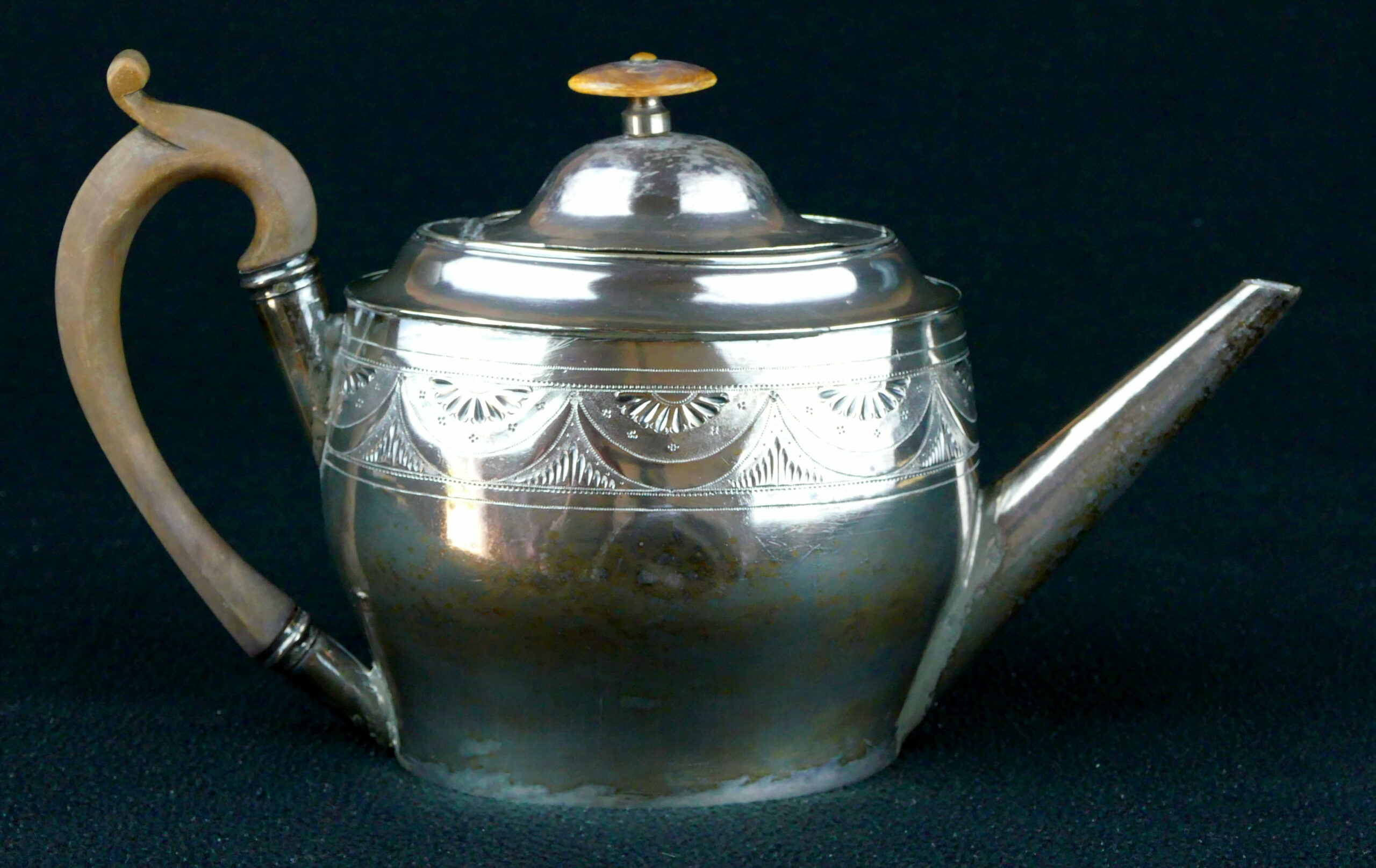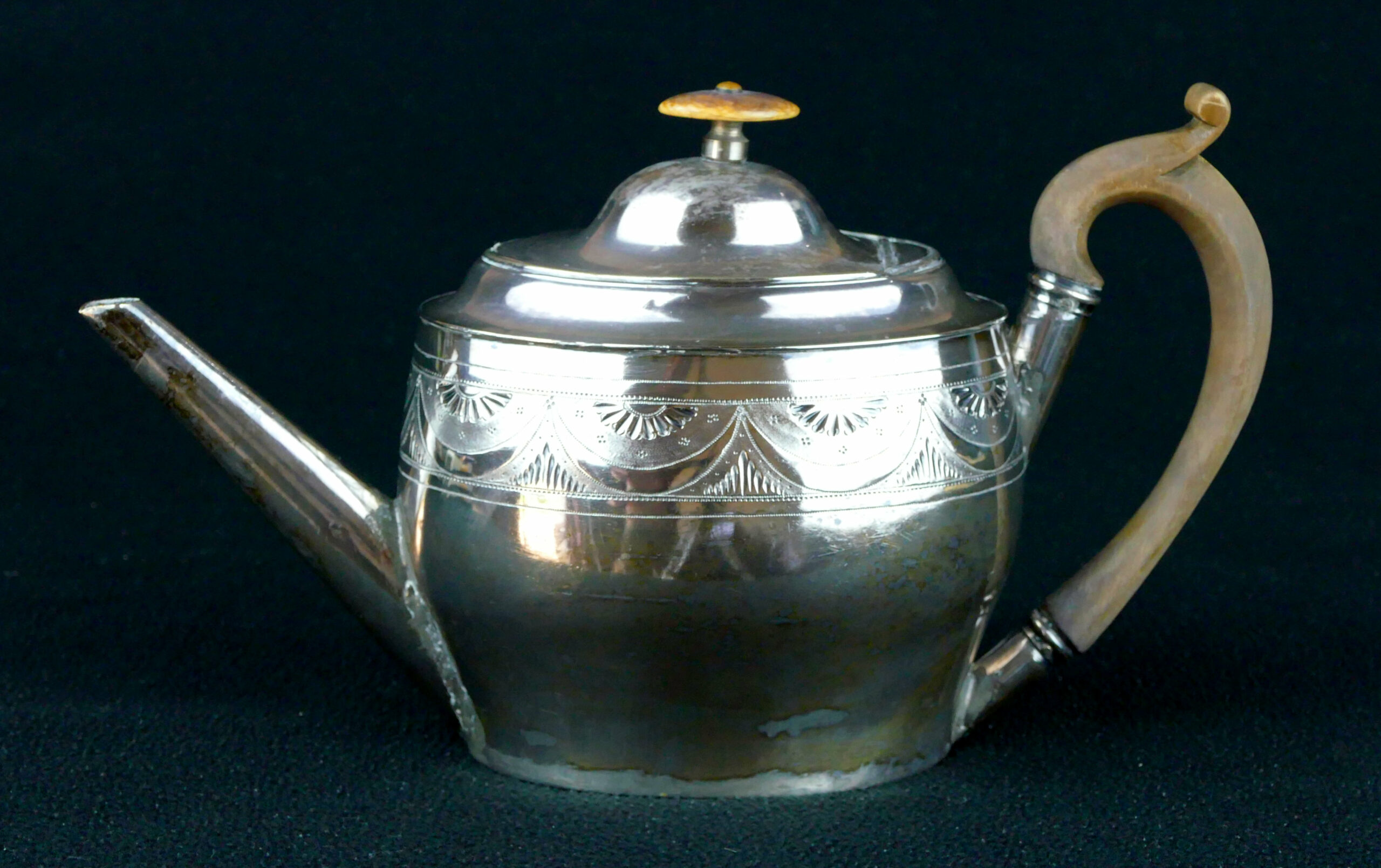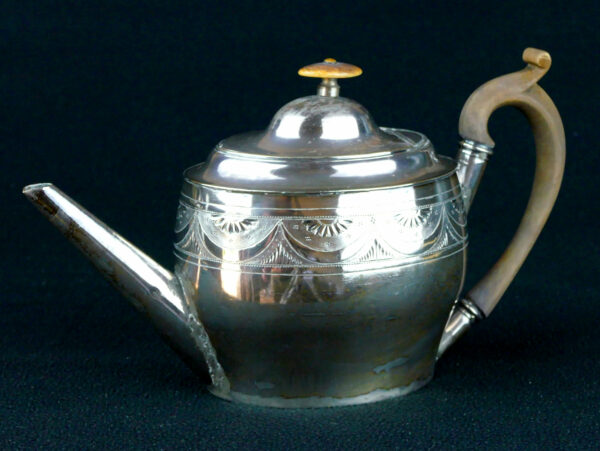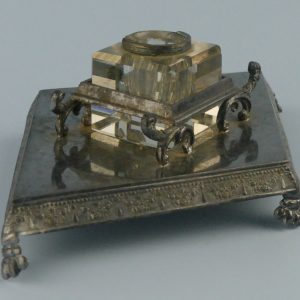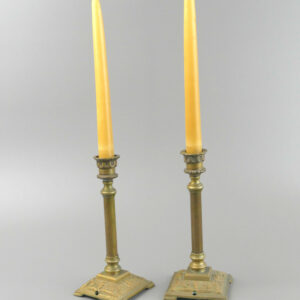This exquisite Portuguese silver teapot, hailing from the pivotal transition between the late 18th and early 19th centuries, stands as a testament to the Neoclassical style. It is an authentic piece, rich with historical value and untouched by modern imitation.
Grace and symmetry guide its design, presenting a rounded body that culminates in a refined, curvaceous spout. The handle, possibly insulated with a spacer crafted from either ivory, bone, or possibly Rosewood, adds to the elegance while hinting at the utilitarian aspect of the teapot. The lid’s pommel, likely made of ebony, provides a striking contrast and is indicative of the attention to detail prevalent in the era’s craftsmanship.
An intricately engraved decorative band adorns the teapot, displaying a foliate motif characteristic of Neoclassical design, which often featured garlands and swags. These motifs were not merely decorative but were emblematic of the aesthetic leanings of the time.
Beyond its beauty and functionality, the teapot bears marks of being a cherished item. Signs of wear and minor bruises subtly grace its surface, a narrative of its age and the genteel hands through which it has passed. These gentle imperfections do not detract from the item’s desirability; instead, they add depth to its story and authenticity to its provenance.
In the 18th century, such a teapot would have been more than a household object; it would have been a display of wealth and social standing, especially when tea was an expensive luxury. Measuring at 15 cm in height, 10 cm in width, and weighing 375 g, it remains an object of considerable allure.



